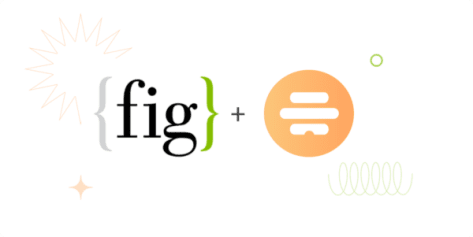Fig is a British venture capital group that provides a pragmatic approach to supporting and investing in high-growth, early-stage companies across the US, Europe, and Asia. Fig brings together exciting early-stage companies and experienced investors with relevant industry experience to give the companies it backs the very best chance of success. As Investment Director Jon Landau puts it, Fig focuses on finding “the right investor, for the right company, at the right time,” to ultimately help founders reach their goals.
When we spoke with Jon Landau, he emphasized that Fig does not have a “one size fits all” approach to its investments. In fact, its 16 portfolio companies span across many sectors, ranging from medical tech to B2B SaaS, and are looking to raise anywhere from £500k to £5m in capital. This variation in industry and scale means that no two client-investor partnerships look the same. Fig may help one company strictly with funding, while for another it develops a business model or helps with marketing strategy.
Fig’s investment method is pragmatic and innovative — but it takes an organized system to simultaneously lead 16 companies to exponential growth.
Before Hive: Information Split Between Two Platforms
Before Hive, Fig’s workflow was split between two tools. To share project updates and communicate internally, Fig used a tool called Twist. The team set up channels for each of its portfolio companies in Twist, which is organized similarly to Slack, and would send updates as they happened via messages. In addition to Twist, Fig used Smartsheet to manage corporate governance checklists for each of its portfolio companies.
Twist and Smartsheet got the job done, but Fig always had a sense that it needed to consolidate those two systems and processes. The benefit of Twist was that it allowed Fig’s remote employees to communicate asynchronously without everyone needing to be online at the same time. However, it lacked the ability to assign actions and set deadlines to hold people accountable. And while their corporate governance checklist worked just fine in Smartsheet, the separation between these two platforms prevented people from being able to see both sides of the project — corporate governance and general company updates — in one single place.
Was there a single platform that could provide the same benefits, while also filling in critical gaps in its workflow? Fig’s answer was Hive.
The Search For A Single Solution
When the Fig team set out to find its project management solution, it decided to try one tool at a time. When a small group of people tested Monday, they felt that the platform was too task-focused, as opposed to focusing on overall collaboration. Fig needed a tool that would let the team break down tasks into projects for each portfolio company, and Monday just didn’t have the right functionality.
When Monday didn’t work out, Jon Landau decided it was time to try Hive. Jon had formerly worked with Hive CEO John Furneaux at a previous SaaS startup, and he had been following Hive’s success for a couple of years. Jon had a feeling that Hive would solve their needs, so he reached out to a sales representative and asked for help building out a workspace before bringing on other team members. Jon had extensive experience in the SaaS industry, and he knew how crucial it is to create a clear structure before users are invited to try out a platform. Instead of feeling overwhelmed by a blank canvas, Jon wanted his teammates to be able to visualize how they would actually do their work when they logged into Hive for the first time.
Jon’s hunch was correct. Four of his colleagues started with Hive, including one of the firm’s partners, and decided to roll it out to the rest of Fig. To ease the transition and make sure they get proper feedback, Fig didn’t immediately terminate the contracts of the other tools. And as the team gradually transferred information over to Hive, people just drifted away from the other tools — and they haven’t looked back since.
We asked people to use Hive instead of the other platforms for however long they wanted, and they just drifted away.
The Power Of Seeing An Entire Portfolio In One Snapshot
Now everyone on the Fig team, regardless if someone works with a specific company, has the ability to see what is going on across the entire portfolio and stay updated with the latest information in a single snapshot. Whether it’s investment stats or updates from the latest board meeting, everything Fig does is kept right in Hive. And while employees can see all they need, directors can still keep some client information behind ethical walls where necessary to prevent conflicts of interest or maintain confidentiality.
With Hive we can gain an overview of everything that’s going on across the portfolio, at any one time.
Accessing information in a single snapshot is especially beneficial for maintaining relationships with clients and investors. Requests for information often come on an ad-hoc basis, so the ability to quickly pull up a view of everything happening across all portfolio companies is invaluable.
Moving Forward: “More And More Beneficial”
In the year since Fig first implemented Hive, the company has significantly transformed the processes by which it shares information internally, and manages the day to day workload for its 16 portfolio companies. Even more, Fig has shifted to a primary remote work model after the pandemic, so Hive helps bring the team together and collaborate when not in person too. And although Fig has already experienced the benefits of Hive, Jon Landau agrees that they will only increase as both Fig — and the Hive platform itself — grow and evolve together.
From the portfolio management perspective, the benefits of everyone having an overview of work and understanding relevant tasks in Hive will only become more and more beneficial.
